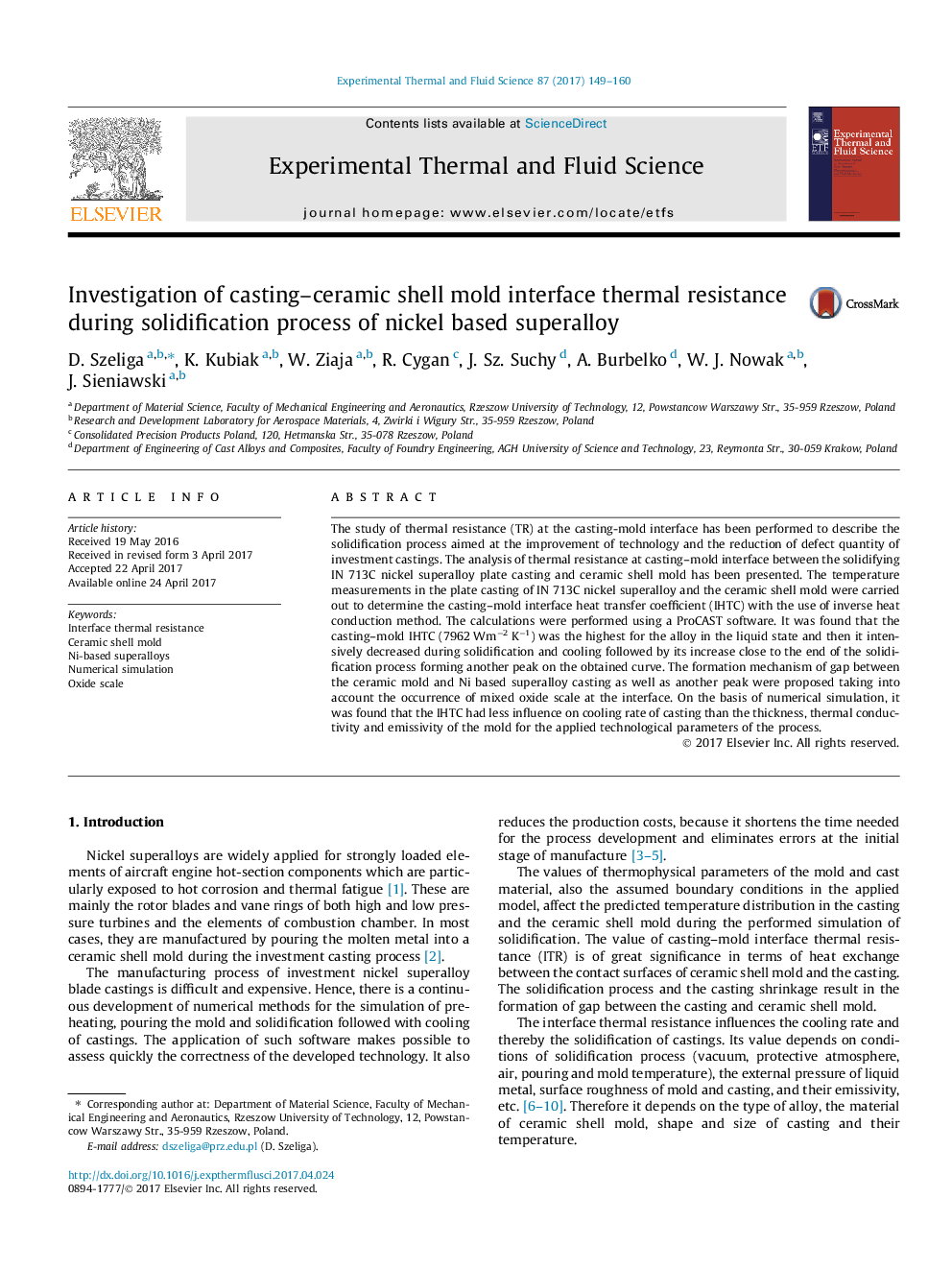| کد مقاله | کد نشریه | سال انتشار | مقاله انگلیسی | نسخه تمام متن |
|---|---|---|---|---|
| 4992701 | 1457389 | 2017 | 12 صفحه PDF | دانلود رایگان |
- IHTC between Ni-based alloys and ceramic mold was calculated by inverse method.
- IHTC decreases from 7962Â Wmâ2Â Kâ1 to of 1425Â Wmâ2Â Kâ1 during solidification.
- Increase of IHTC was observed at final stage of solidification of casting.
- Effect of thermophysical parameters of mold on cooling rate of casting was determined.
- Formation mechanism of interface thermal resistance taking into account oxide scale was proposed.
The study of thermal resistance (TR) at the casting-mold interface has been performed to describe the solidification process aimed at the improvement of technology and the reduction of defect quantity of investment castings. The analysis of thermal resistance at casting-mold interface between the solidifying IN 713C nickel superalloy plate casting and ceramic shell mold has been presented. The temperature measurements in the plate casting of IN 713C nickel superalloy and the ceramic shell mold were carried out to determine the casting-mold interface heat transfer coefficient (IHTC) with the use of inverse heat conduction method. The calculations were performed using a ProCAST software. It was found that the casting-mold IHTC (7962Â Wmâ2Â Kâ1) was the highest for the alloy in the liquid state and then it intensively decreased during solidification and cooling followed by its increase close to the end of the solidification process forming another peak on the obtained curve. The formation mechanism of gap between the ceramic mold and Ni based superalloy casting as well as another peak were proposed taking into account the occurrence of mixed oxide scale at the interface. On the basis of numerical simulation, it was found that the IHTC had less influence on cooling rate of casting than the thickness, thermal conductivity and emissivity of the mold for the applied technological parameters of the process.
Journal: Experimental Thermal and Fluid Science - Volume 87, October 2017, Pages 149-160
